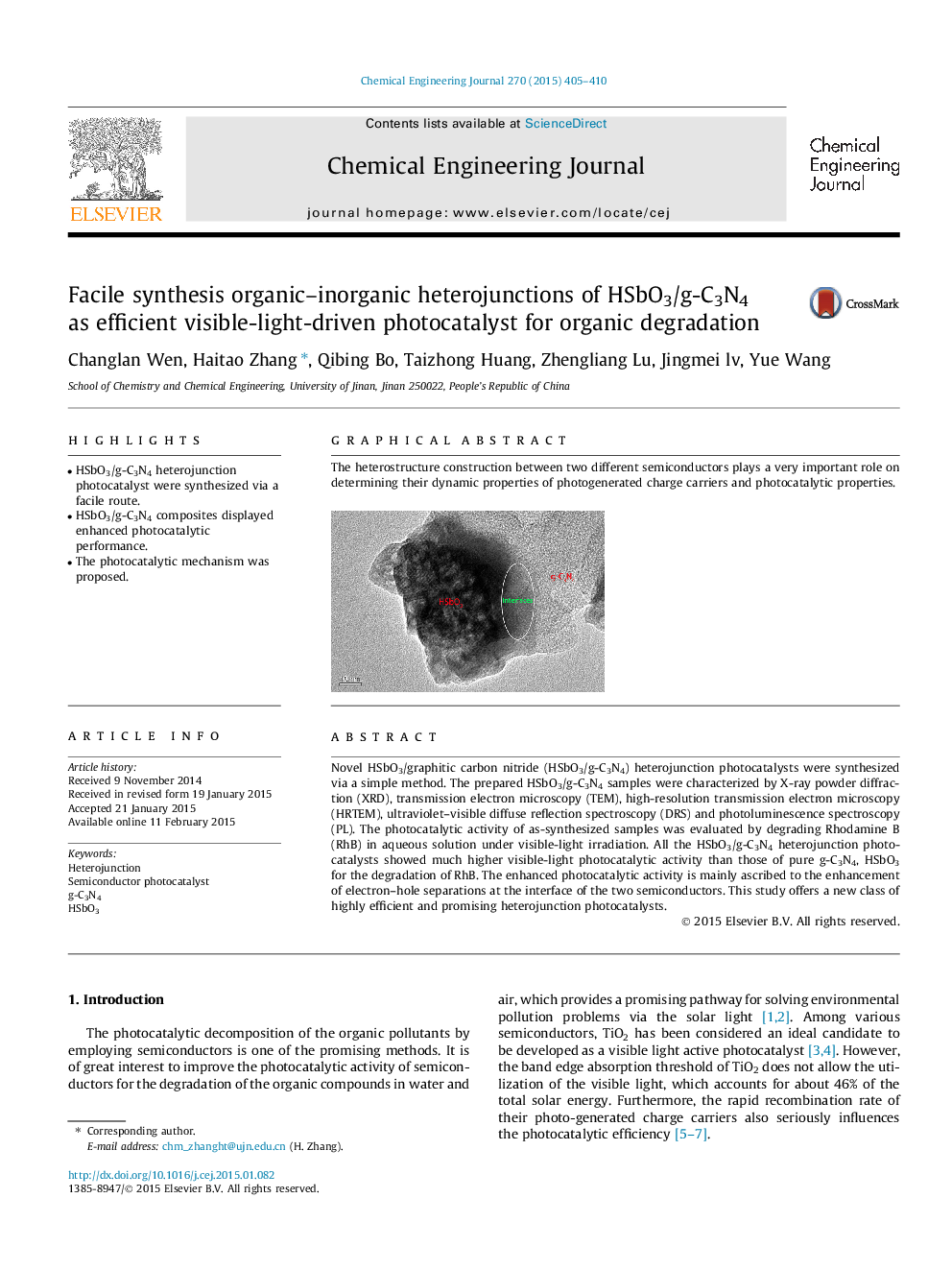| Article ID | Journal | Published Year | Pages | File Type |
|---|---|---|---|---|
| 146462 | Chemical Engineering Journal | 2015 | 6 Pages |
•HSbO3/g-C3N4 heterojunction photocatalyst were synthesized via a facile route.•HSbO3/g-C3N4 composites displayed enhanced photocatalytic performance.•The photocatalytic mechanism was proposed.
Novel HSbO3/graphitic carbon nitride (HSbO3/g-C3N4) heterojunction photocatalysts were synthesized via a simple method. The prepared HSbO3/g-C3N4 samples were characterized by X-ray powder diffraction (XRD), transmission electron microscopy (TEM), high-resolution transmission electron microscopy (HRTEM), ultraviolet–visible diffuse reflection spectroscopy (DRS) and photoluminescence spectroscopy (PL). The photocatalytic activity of as-synthesized samples was evaluated by degrading Rhodamine B (RhB) in aqueous solution under visible-light irradiation. All the HSbO3/g-C3N4 heterojunction photocatalysts showed much higher visible-light photocatalytic activity than those of pure g-C3N4, HSbO3 for the degradation of RhB. The enhanced photocatalytic activity is mainly ascribed to the enhancement of electron–hole separations at the interface of the two semiconductors. This study offers a new class of highly efficient and promising heterojunction photocatalysts.
Graphical abstractThe heterostructure construction between two different semiconductors plays a very important role on determining their dynamic properties of photogenerated charge carriers and photocatalytic properties.Figure optionsDownload full-size imageDownload as PowerPoint slide
